Gamification in eCommerce - what is it and How can It boost sales in your online store?
Spis treści
- Gamifikacja - co to?
- Grywalizacja & eCommerce - dlaczego gamifikacja to skuteczna strategia?
- Gracz czy konsument - do kogo kierować grywalizację?
- Gamifikacja - najciekawsze przykłady z branży
- Jak wprowadzić grywalizację do swojego sklepu internetowego?
- Czy grywalizacja sprawdzi się w każdym e-sklepie?
- Wejdź na poziom wyżej z gamifikacją w eCommerce
What if you gave your customers the chance to win discounts on products in your online store instead of just offering them outright? The results can be surprising—increased engagement, higher conversion rates, and more frequent returns to your e-shop. Such effects can be achieved through gamification, a strategy that is gaining more and more popularity in the eCommerce industry
In a world where consumer attention is priceless, gamification becomes an important element in encouraging purchases in eCommerce. How does it work? Why do the biggest brands in the world adopt this strategy? In this article, you will discover how to introduce gamification to your online store, see inspiring examples of its application, and learn how to tailor it to the specific needs of your customers. Check it out!
What is Gamification?
Gamification is a promotional strategy that uses game-like mechanisms to enrich the sales process. By combining shopping with entertainment, companies can capture customers' attention for longer and make their shopping experiences more memorable.
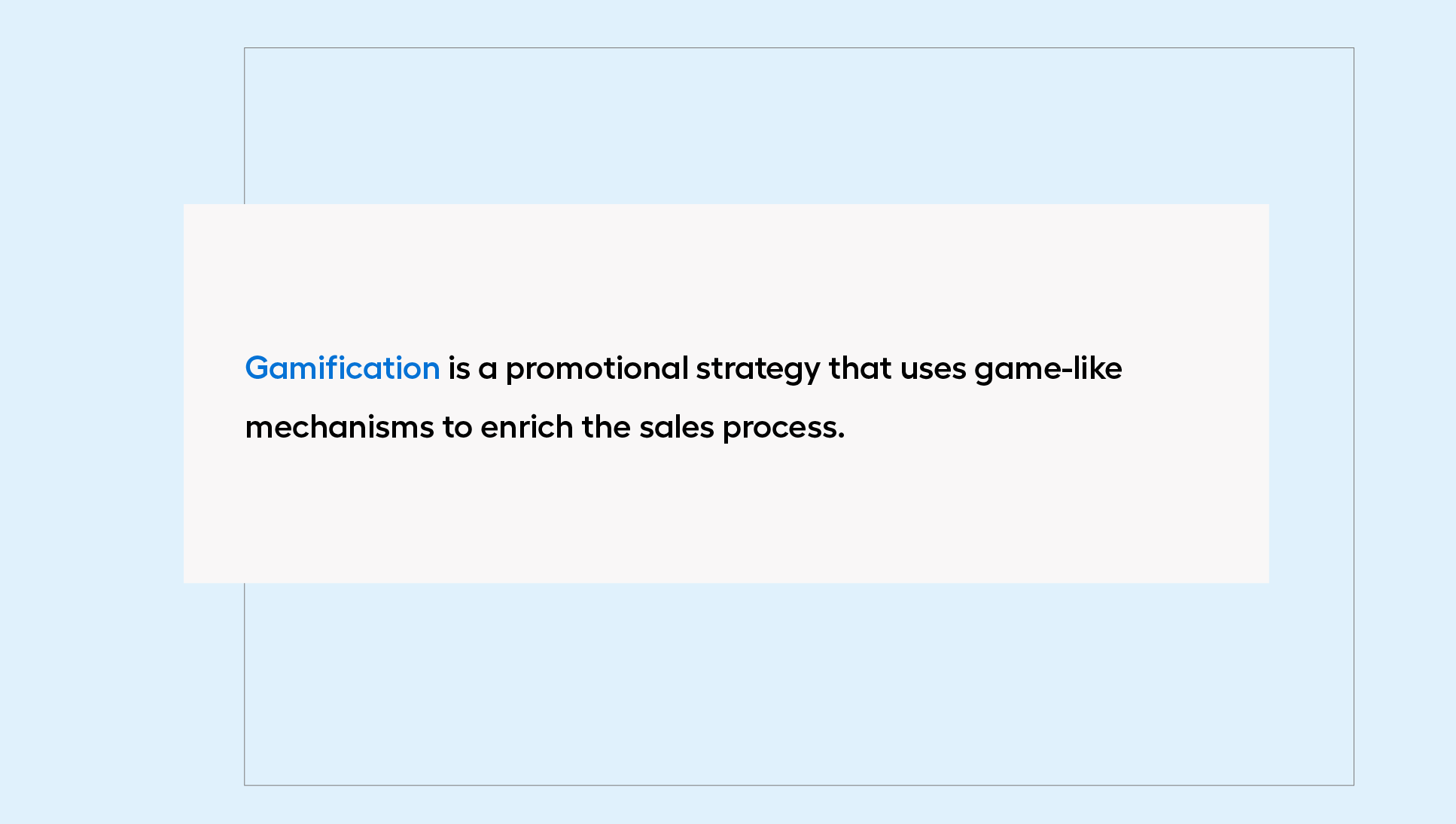
Currently, gamification is gaining popularity in the eCommerce industry for several reasons. First, in times of increasing competition, gamification is an effective way to stand out in the market. It also meets customer expectations and enhances their shopping experience. For many, especially the younger generation growing up in the digital age where online entertainment is an integral part of life, standard online shopping can seem monotonous. However, elements like points, badges, leaderboards, and challenges make the interaction with a brand more dynamic and satisfying.
Gamification & eCommerce - why is gamification an effective strategy?
Why is gamification and eCommerce a good combination? Because it is not only a response to the dynamics of modern times but also a strategy rooted in the psychology of sales. Gamification leverages people's natural inclination towards competition - simple games offered by online stores allow for quick achievement of goals and instant gratification. In return for their effort, customers can purchase products at a discount by winning discount codes or vouchers, which increases their engagement and shopping satisfaction.
However, these are not the only reasons to consider using gamification. It’s a strategy worth considering due to benefits such as:
- keeping the customer's attention longer- gamification makes customers spend more time on the store’s website, engaging in offered games and challenges. Think about how often you get caught up in a game and lose track of time - similar mechanisms work in eCommerce, encouraging customers to return to the site frequently in search of new challenges and rewards.
- increasing loyalty - customers who feel rewarded for their activity are more likely to return and make additional purchases. Reward systems, loyalty points, or exclusive discounts for the most active participants effectively motivate them to continue using the store’s offerings.
- gaining additional customer behaviour insights - gamification provides valuable data on customer behaviour, which can be used to optimise marketing and sales strategies and personalise the shopping experience. Analysing customer behaviours and preferences in games allows stores to better tailor their offers to the individual needs of users. For example, if a customer frequently participates in quizzes about a specific type of product, the store can send them personalised offers and discounts on those products.
In summary, implementing gamification in an online store is an innovative approach that benefits both customers and stores. It’s an opportunity not only to increase profits in the short term but also to build a community around the brand, enhancing the chances of long-term success.
To whom is gamification targeted?
Let’s take a closer look at the similarities between a gamer and an eCommerce customer you might find that there are more than it initially seems. Both gamers and online shoppers experience emotions and satisfaction from achieving a goal. Despite these similarities, there are certain elements that differentiate hobby gaming from gamification in eCommerce. It’s important to pay attention to the following aspects:
- game length and complexity - in eCommerce, it's crucial that the game is short and simple. Long or difficult games can discourage customers who lack the time or desire for complex challenges. The goal of gamification is not only to provide entertainment but also to prompt the user to perform a specific action, such as purchasing a product, signing up for a newsletter, or following the brand on social media.
- purpose of the game - in traditional games, the aim is usually to achieve the highest score, reach new levels, or unlock special rewards. In eCommerce gamification, the goal is to guide customer behaviours in a way that brings business benefits. The game should be designed to lead to increased sales, build loyalty, or collect customer data.
- integration with the Shopping Experience - games in eCommerce should be seamlessly integrated into the shopping process, enhancing it rather than disrupting it. Customers should not feel that they are playing something completely unrelated to their shopping goals. Instead, games should be smoothly woven into the navigation of the store, browsing products, and completing transactions.
Gamification - the most interesting examples from the industry
Gamification is one of the leading trends in eCommerce, and as such, it is eagerly adopted by major players in the industry, both internationally and in Poland. Each company adapts this strategy in its own way, presenting different approaches to utilising gamification mechanisms. Discover how flexible a strategy gamification is and how to use it in practice.
Nike Run
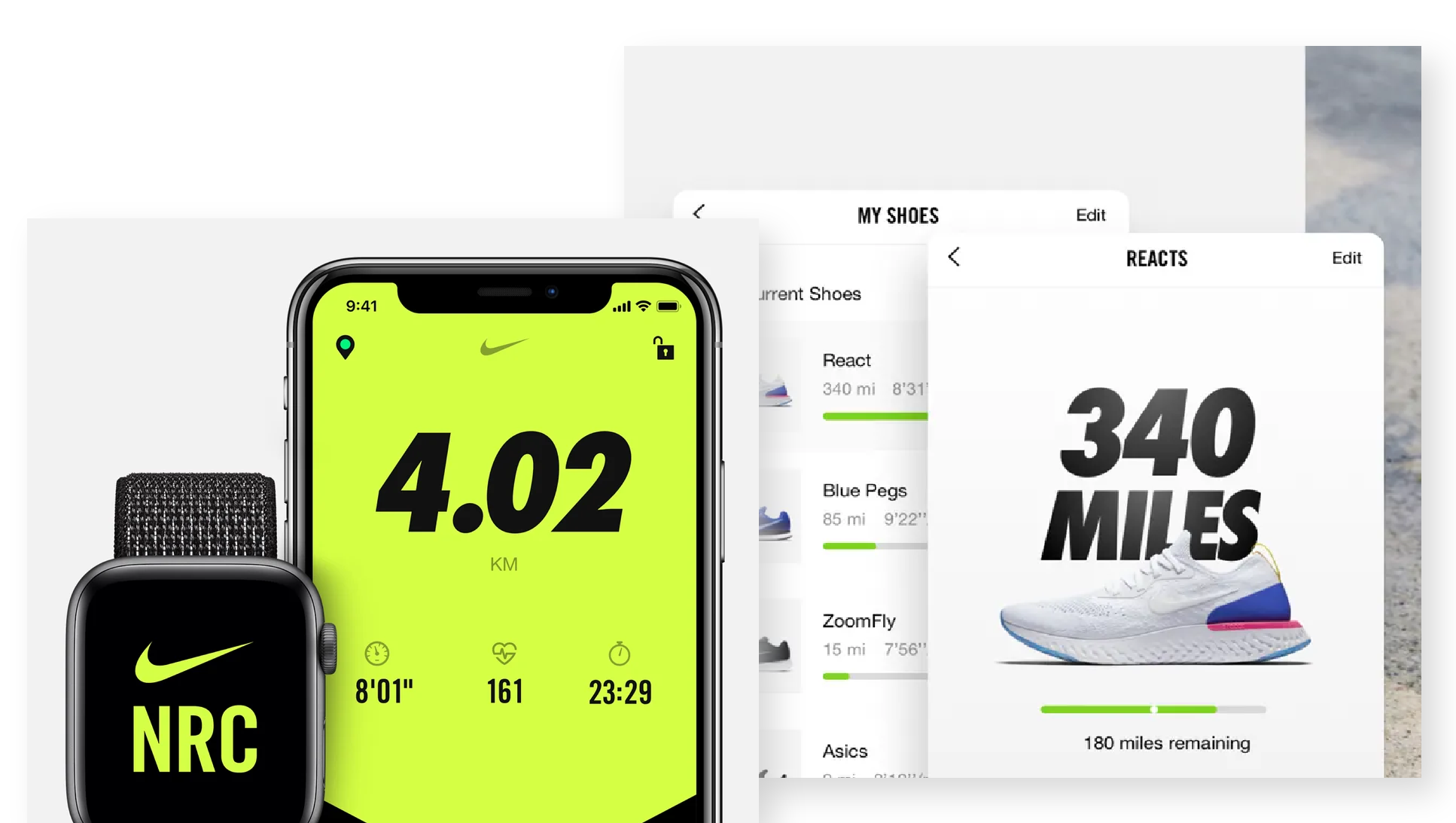 Source: https://www.nike.com/in/nrc-app
Source: https://www.nike.com/in/nrc-app
Nike decided to combine gamification elements with their customers' passion for sports by creating an advanced app for runners. Users of the app can track their performance, use ready-made training plans, build a community, share their achievements, and collect badges for breaking their own records. This approach helps the brand build lasting relationships with users who launch the app on their smartphones for every workout. Moreover, the app not only fosters loyalty but also supports sales users can browse a catalog of shoes, and the app tracks the wear and tear of their current models (not just Nike ones), suggesting replacements at the right time.
OnlyBio
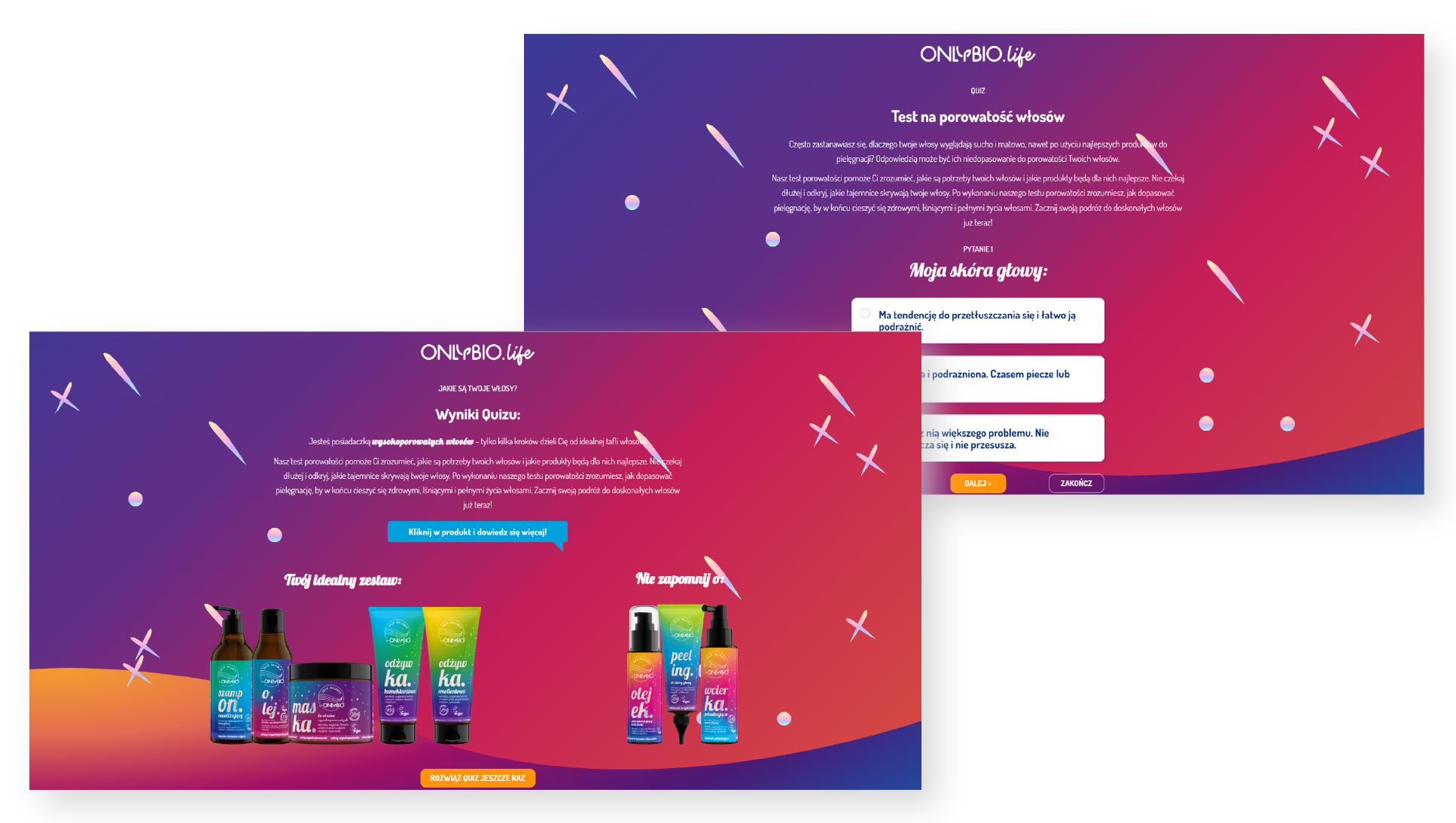 Source: https://onlybio.life/quiz/
Source: https://onlybio.life/quiz/
The Polish cosmetics brand OnlyBio introduced gamification in the form of a quiz that helps customers choose the best set of products for their hair type. The short and simple quiz saves users the time they would otherwise spend searching for information on their own. After completing the quiz, the user receives a list of recommended products, increasing the likelihood of making a purchase.
Lacoste
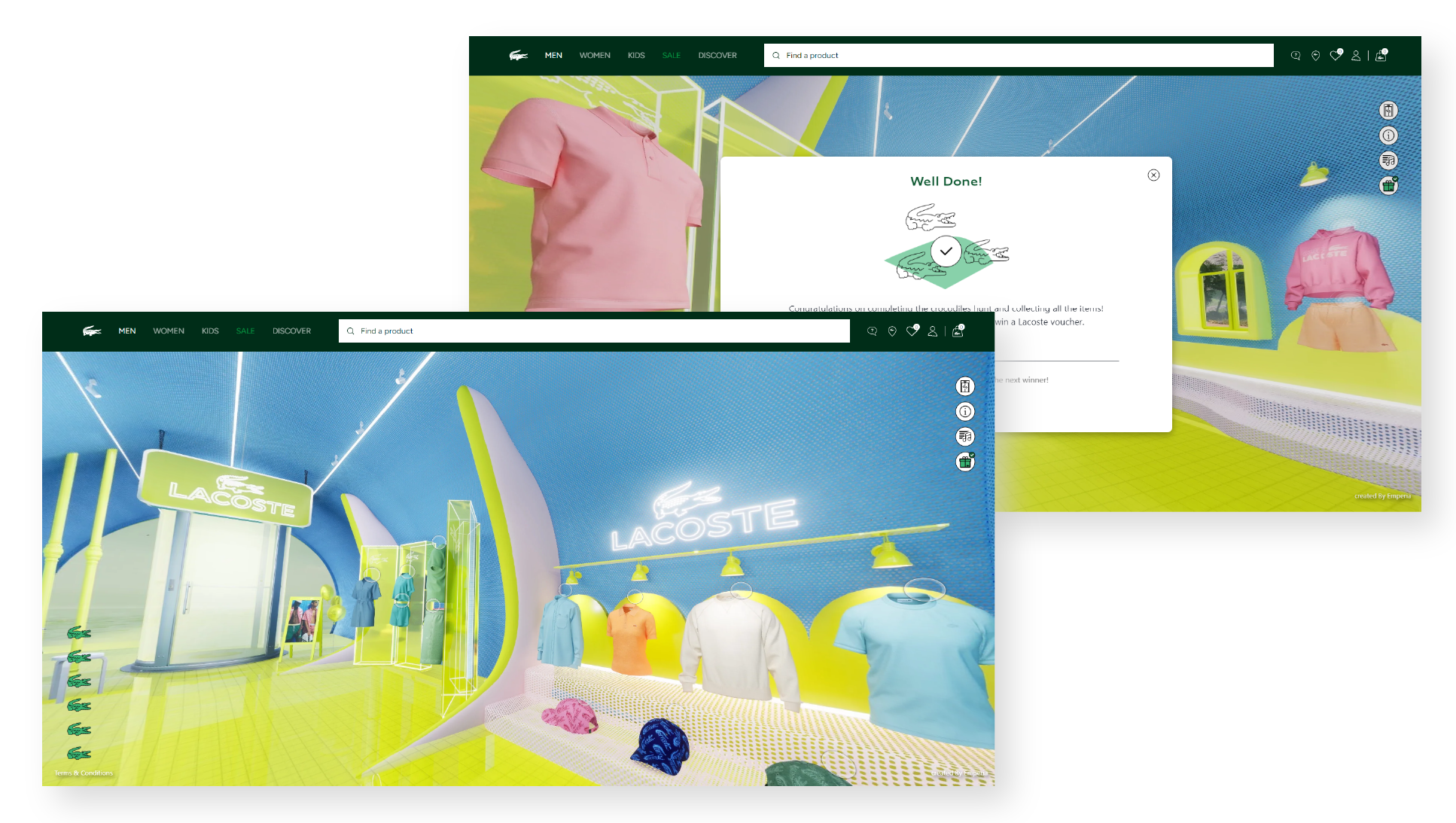 Source: https://vrscout.com/news/sephoras-ar-app-update-virtual-makeup-on/
Source: https://vrscout.com/news/sephoras-ar-app-update-virtual-makeup-on/
On the British version of the Lacoste website, in addition to the standard product listing, there is a tab that takes users to the brand's virtual showroom. This combination of VR (virtual reality) and gamification allows users to "walk" through the store, where they can discover hidden crocodile icons (resembling the brand's logo). After collecting all the icons, they have a chance to win a shopping voucher, which further engages customers and increases their interaction with the brand.
How to introduce gamification to your online store?
To introduce gamification to your online store, you don't need to create a complex application right away. You can start with small changes in communication that spark the "spirit of gamification" in your customers. Here are a few practical methods that you can easily implement in your eCommerce:
- Wheel of fortune - introducing an interactive wheel of fortune to your online store can significantly increase customer engagement. By allowing them to spin the wheel, for example, right after entering the site (via a pop-up window), you can offer various rewards such as discounts, free products, or loyalty points. This form of fun not only attracts attention but also increases the chances of making a purchase.
- Virtual scratch card - an alternative to the wheel of fortune are virtual scratch cards. Customers can scratch virtual cards to reveal hidden discounts, free samples, or other rewards. This interactive form of gamification not only arouses curiosity but also motivates more frequent visits and purchases.
- Loyalty program with gamification elements - you can also reward customers with additional points for completing specific actions in your online store (e.g., writing a review, signing up for the newsletter, or following on social media). These points can be exchanged for discounts, free shipping, or other rewards.
- quizzes - use quizzes as a gamification tool that not only engages customers but also helps them make the best product choices (as the OnlyBio brand did). Through quizzes, you can also gather valuable information about customer preferences, allowing you to better tailor your store's offerings to their needs.
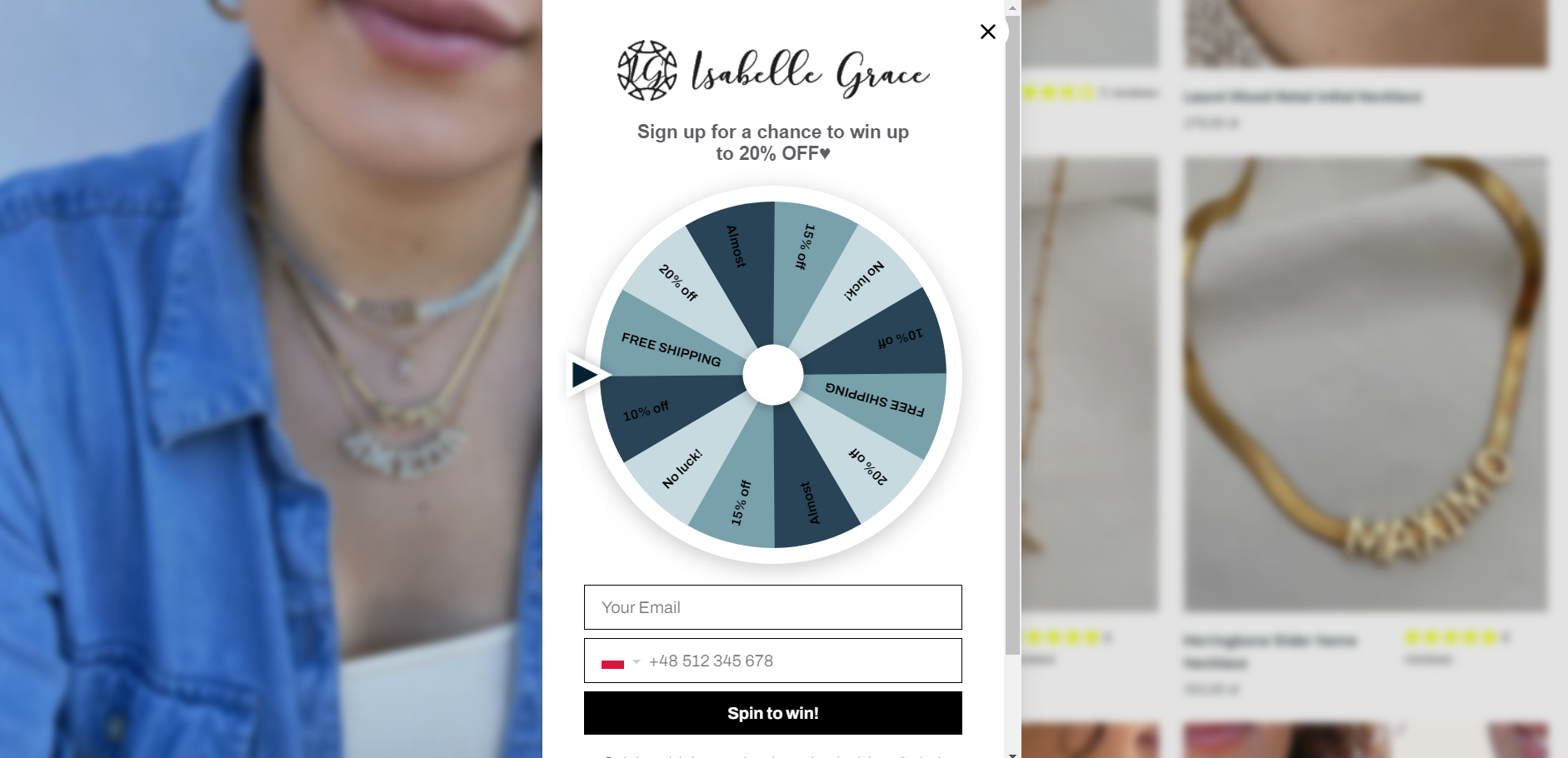 Wheel of fortune in a jewelry store https://www.isabellegracejewelry.com/
Wheel of fortune in a jewelry store https://www.isabellegracejewelry.com/
Will gamification work in every online store?
As with most aspects of running an eCommerce business, there is no definitive answer to the question: “Will gamification work in my online store?” It all depends on the specifics of the business each online store has its unique target audience, product characteristics, and specific business goals. The effectiveness of gamification will depend on whether you can appropriately match gamification mechanisms to the expectations and preferences of your customers. In some industries (e.g., cosmetics), where competition is high, gamification can be a very effective tool for attracting and engaging customers. However, there are also industries where gamification elements might distract or even hinder users. This would be the case for stores with highly technical offerings, where customers are focused on quickly and accurately completing their purchases (e.g., tools and renovation materials). In such cases, a well-thought-out loyalty program or additional discount might be more effective than a specially designed game.
In every case, however, it is crucial to regularly monitor the effectiveness of the applied solutions, analyse collected data, and continuously adjust gamification strategies to maximise their potential and support the growth of the online store. Metrics such as conversion rate after playing a game, cart value, or the number of newsletter sign-ups can provide valuable insights into the effectiveness of gamification. It’s worth focusing on comparing the activities of users engaged in gamification with those not using these features. This way, you can better understand which elements work and which need improvement, allowing for more efficient management of gamification strategy in eCommerce.
Take your eCommerce to the next level with gamification
If you're looking for a way to not only improve your customers' shopping experience but also elevate it to a whole new level, gamification can help you achieve this. This strategy offers numerous benefits—from increasing engagement and loyalty, providing valuable analytical data, to standing out from the competition. However, the key to success lies in appropriately matching gamification mechanisms to the specific needs and expectations of your customers. Experiment with different forms of gamification, continuously track the results, and refine your strategy accordingly. From interactive quizzes to dedicated apps—the possibilities are almost limitless. Bet on gamification and take your eCommerce to the next level!



